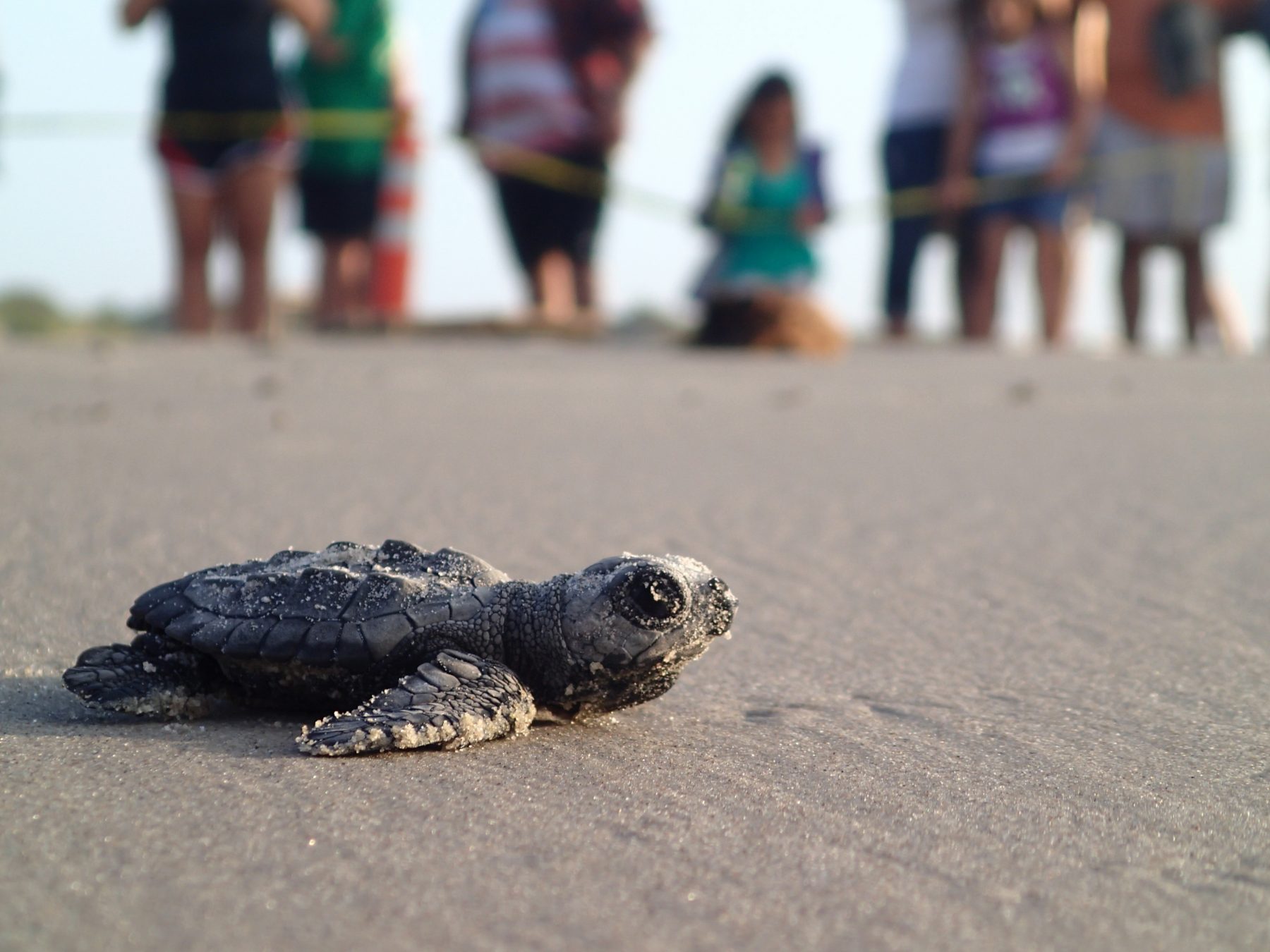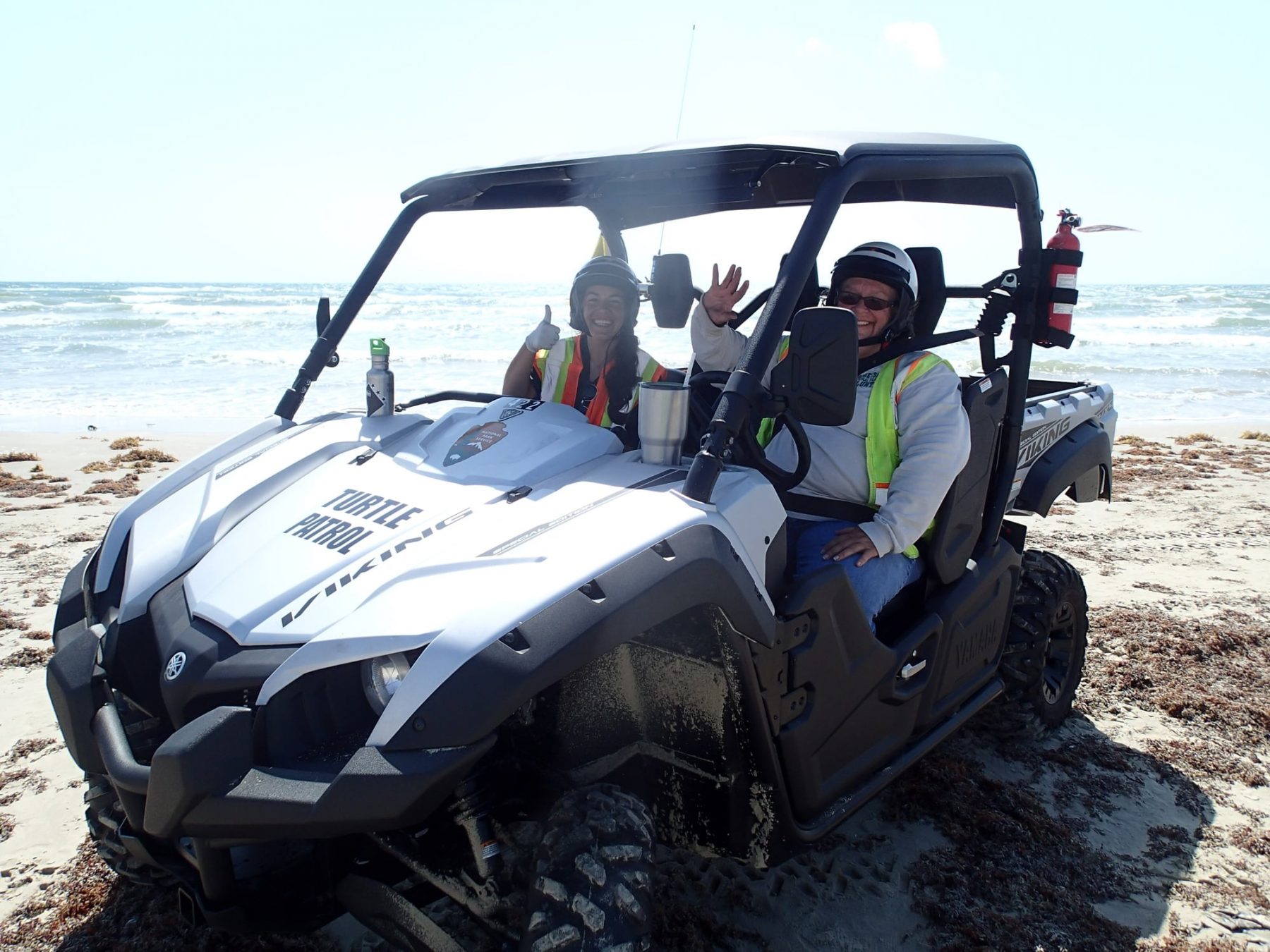
A Kemp’s ridley hatchling on Padre Island. Photo courtesy National Park Service.
Every day, from April through mid-July, the Division of Sea Turtle Science and Recovery at the Padre Island National Seashore combs 80 miles of Padre Island’s beaches in search of Kemp’s ridley sea turtles–the most critically endangered sea turtle in the world–coming ashore. It’s nesting season, but things are a bit unusual this year due to COVID-19.
“Our program for finding, documenting, and protecting sea turtles is looking different right now,” says Donna Shaver, Chief of the Division of the Sea Turtle Science and Recovery at Padre Island National Seashore.
As part of the sea turtle program, a trained volunteer drives a patrol vehicle with a biological technician, who scans beaches for turtle tracks, turtles that are nesting, and nests. This daily tracking helps scientists understand the health and status of the turtles and ensure the species’ survival. But with COVID-19 and social distancing guidelines, most of the volunteers are not able or are choosing not to drive at this time as the vehicle seats are less than 6 feet apart. In addition, most of the technicians are fresh out of college and not from the area, meaning they’re searching for turtles and nests in unfamiliar territory. Under normal circumstances, the technicians would have the local volunteer with them to help navigate the beaches.

What a typical sea turtle patrol looks like on Padre Island National Seashore. Photo courtesy National Park Service.
“It’s less eyes and ears on the beach, and another reason why public education on the turtles is so important,” Shaver says. “The patrols allow the balance between recreation and protection.”
Padre Island is the most important nesting site in the United States for Kemp’s ridleys. Members of the smallest sea turtle species love to nest on windy days and in high tide, which causes their faint tracks to easily get washed or blown away. They like to nest during the day, which is prime time for beachgoers. And they’re quick to lay eggs—they’re able to emerge from the water, lay eggs in a nest, cover the nest with sand, and be back in the water within 45 minutes tops, which means nests could be easily missed on patrol. “We’re out here hoping we can find the sites before visitors do, so we can show them how to stay away,” Shaver says.
Shaver and The Division of Sea Turtle Science and Recovery suggest adhering to the following precautions. If you find a nesting Kemp’s ridley turtle or tracks, stand back and let her nest and leave the nest undisturbed. Notify a passing patroller or call 1-866-TURTLE5 or (361) 949-8173 ext. 226. Don’t rush up to a nesting turtle if you see one, and help keep other visitors away. Fill in holes dug in the sand, so mother turtles and hatchlings don’t get trapped. Do not touch turtles or eggs. Pick up your trash and take out what you bring in. And lastly, drive carefully on beaches and adhere to speed limits.








